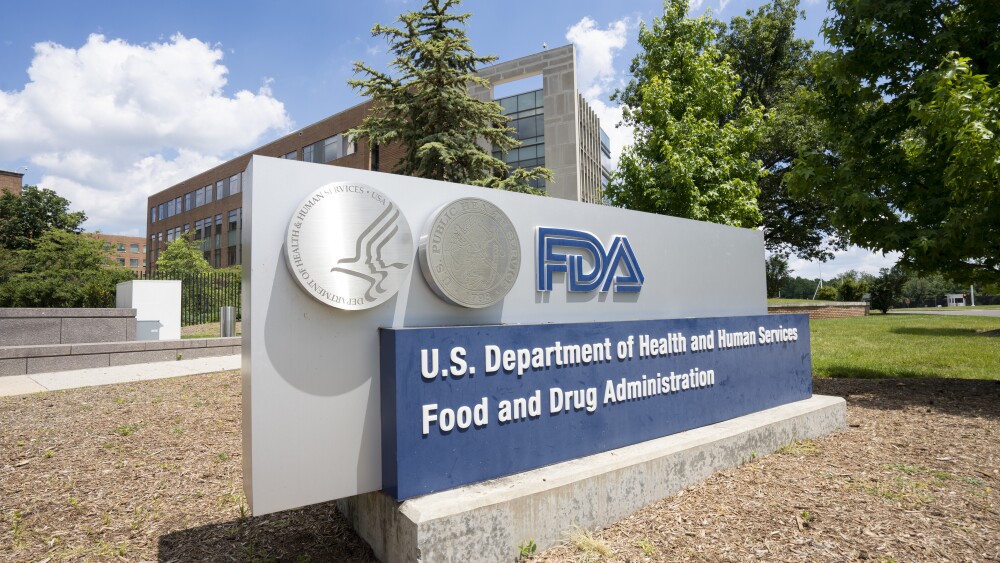Viking Therapeutics CEO Brian Lian is watching the growth of interest in MASH and obesity but prepared to go it alone.
For the seven companies chasing Metsera before Pfizer finally won with a $4.9 billion offer, there’s a little company called Viking Therapeutics they may want to know about. And according to analysts, they probably already do.
Viking is steaming ahead with its clinical program, according to a third quarter earnings update on Wednesday afternoon. The company’s Phase III VANQUISH trials are enrolling quickly and on track to complete and there’s $715 million in the bank to fund it all.
The update showed that the little metabolic disease company is “running on all cylinders,” according to Truist Securities. On Thursday morning, Viking’s shares spiked 7% to $33.75, a recovery for the biotech that, along with its peers in the battered industry, has fallen nearly 22% year to date. The company has also suffered some staggering blows due to a readout for key obesity med VK2735 that failed to live up to analyst expectations.
Analysts on Thursday were pleased with Viking’s progress but still wanted to know what the company thought about Pfizer and Metsera. One analyst, after congratulating management on the quarter, asked CEO Brian Lian to comment on what he felt were the “favorable/unfavorable” aspects of the deal for Metsera. Lian wouldn’t bite.
“Oh gosh. We typically don’t comment on other people’s deals. I think it’s a much better question for Pfizer or Metsera management team. I don’t really have any additional color than what’s out there in the public domain,” he said during the Wednesday earnings call.
But that didn’t stop analysts from speculating on whether Viking will be next as they summarized the earnings presentation. Truist noted that Metsera faced seven suitors in the quest for an M&A deal.
“This points to continued pharma interest in GLP1 space and we think there’s strategic value to VKTX,” the firm wrote, adding that Viking is probably undervalued.
Lian did, however, speak to the potential interest in Viking’s MASH program, VK2809, which the company has been looking to partner. Lian said the space has seen a resurgence lately with deals from Roche, GSK and Novartis.
“Obviously, the space has come back a little bit into focus for investors and partners. And yes, I think we have seen a little bit of that uptick in interest,” he said, adding that the MASH drug and obesity assets make Viking an attractive company. “We have two fantastically valuable assets in the same company. So I think we’re in a really, really good position, and we have seen a little bit of interest in that—in the MASH asset.”
Even with the increased interest in MASH and metabolic diseases, Lian said Viking’s strategy on partnering and its commercial future has not changed.
“We’re certainly receptive to outside interest and nothing’s changed with respect to our thoughts that having a larger party involved would be very helpful in driving the program through commercialization. That said, I don’t think it’s mandatory,” he continued. “We’re prepared to go alone, but we’re also prepared to engage with anybody who is interested.”
Enthusiasm Rising
William Blair noted that Viking has plenty of cash to fund operations for about two years. This would include a readout for the Phase I maintenance trial of oral and subcutaneous VK2735. It could even extend to the Phase III VANQUISH-1 and VANQUISH-2 trials of subcutaneous VK2735 in obesity and obesity with diabetes, respectively, the firm added.
VK2735 is a dual GLP-1/GIP agonist that Viking is developing as an oral pill and subcutaneous formulation. The oral version previously showed 12% body weight reduction at 13 weeks in a Phase II trial that read out in August, which analysts at the time heralded as “strong efficacy.” But the results showed a difficult safety profile, with 20% of the participants dropping out of the trial due to side effects. The adverse events were predominantly gastrointestinal in nature, including mild to moderate nausea and vomiting. The results sent Viking’s shares tumbling 40%.
Nevertheless, Viking has seen rapid enrollment in its later-stage trials for VK2735, William Blair pointed out.
“We believe that the rapid enrollment rate reflects a high degree of patient and physician enthusiasm for the VK2735 program,” the analysts wrote.
Enrollment in VANQUISH-1, which features patients who are non-diabetic with obesity, is expected to wrap up by the end of the fourth quarter. Enrollment for VANQUISH-2, which includes patients who are diabetic, is expected to run until the end of the first quarter. Total enrollment across the two programs will hit 5,600 participants. Viking will also introduce an auto-injector in the program for the subcutaneous doses.
While it’s still early days for the VANQUISH program, Lian said there so far have not been any issues with patients adhering to the treatment plan.
“The VANQUISH studies have enrolled maybe a little ahead of schedule. I think that reflects a fair amount of enthusiasm for the program, and we’re happy to see that [there’s] nothing notable at this point,” he said on the call. “We’re still pretty early in the treatment windows. There’s nothing that’s suggestive of any persistence issues or anything like that. It’s so far going very well according to plan.”
Viking’s Phase I maintenance trial “could give VK2735 commercial edge,” according to Truist. The study will start patients on subcutaneous VK2735 and then transition to the pill version. Truist expects this transition to be relatively seamless, with limited risk of a resurgence of gastrointestinal side effects, since the patients will be receiving the exact same molecule, just in a different form. Data from that trial are expected in the second half of 2026.
But analysts questioned Viking management regarding how they will go about pitching an obesity maintenance drug to the FDA, given there hasn’t been a regulatory precedent set for that yet. Lian admitted to the challenge at the FDA and said payers will be key in commercial discussions, which are still in the early stage for that potential indication.
“We think these data could be quite powerful in providing evidence for how to keep people on therapy. That’s the best way to realize the long-term benefits, and that’s the way payers will ultimately save money is keeping people on and increasing persistence rates,” Lian said. “And that’s exactly why we’re exploring these different maintenance options.”
Truist will be keeping an eye on Viking’s competitors, including Structure, which is expecting Phase II data for the oral GLP-1 aleniglipron in the fourth quarter. The company is exploring slower titration with higher doses, so the focus will be on the safety data.
Yesterday, Terns announced the discontinuation of oral GLP-1 drug TERN-601 after a readout showed underwhelming weight loss results and a questionable safety profile. Asked about the dynamics in the obesity market, Lian said Viking has adjusted dosing and titration to ease side effects that have previously cropped up with VK2735. The company is doing a lot of work to find the right doses across all different treatment options they are exploring for the therapy.
“It’s really, really difficult to develop these therapeutics. The attrition is, I guess, just a reflection of those challenges,” Lian said. “But I think we feel really good about where we are in the competitive landscape with the oral peptide.”
Elsewhere, Viking plans to kick off a Phase I study for the amylin and calcitonin dual-agonist program in the first quarter of 2026, which is slightly delayed from the previously planned initiation in the fourth quarter of this year.






